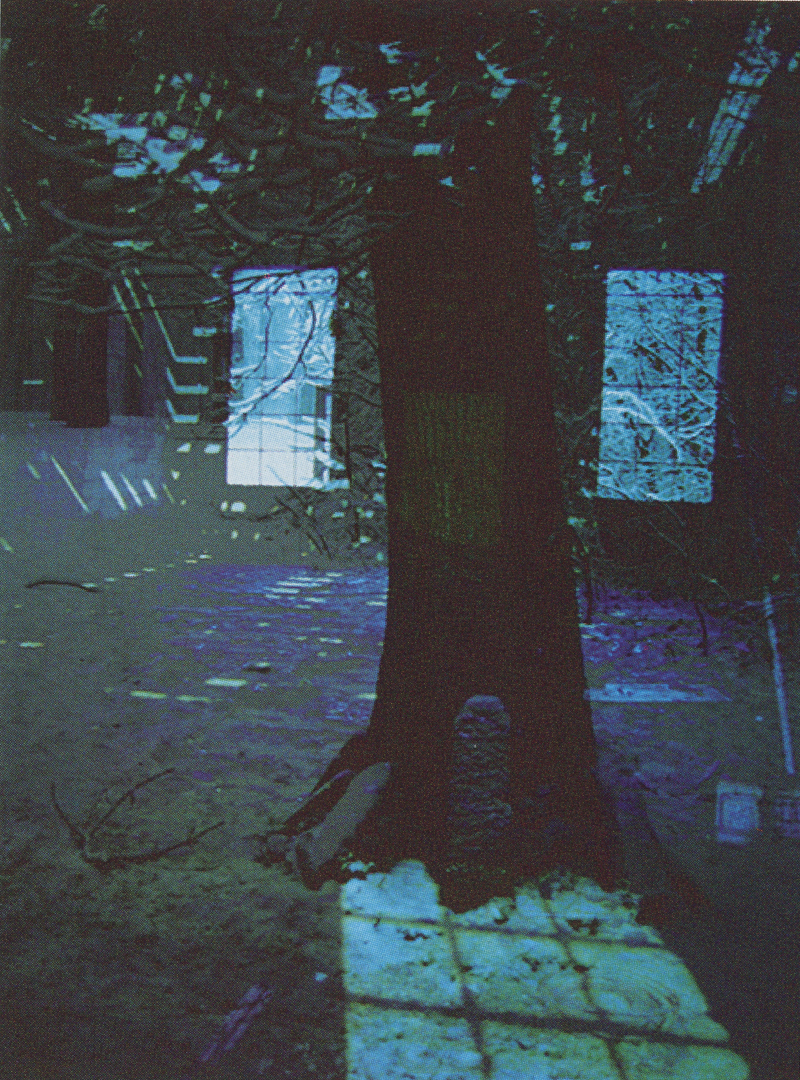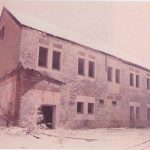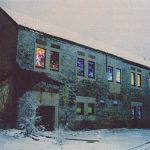Lien Fan Shen, Ching-Fang Chiang, Caroline Quinlan, Edward Schocker: Reconstruction
Artist(s):
Title:
- Reconstruction
Exhibition:
Creation Year:
- 2002
Medium:
- multimedia DVD
Category:
Keywords:
Artist Statement:
Reconstruction is a multimedia DVD project focusing on issues of confinement. It captures the tension of serene and disturbing emotions associated with small confining spaces. Based on still images, Reconstruction is converted to a virtual environment with motion pictures and surround sound.
Space and emotion are investigated through an old Illinois State Hospital that was abandoned in the 1970s. The architectural structure of the old hospital was built on the top of a hill in a small town called Bartonville at the end of the 19th century. Over the years, it grew into a huge structure, occupying more than 35 buildings. At one point, more than 3,000 patients lived there.
The main theme of Reconstruction is not about recreating a particular room of a particular building but a collective experience derived from many sources, including photographs, research, and the viewing response of the audience. It is the spirit of the hospital and the unusual atmosphere of the hundreds of empty rooms that once housed thousands of now-deceased residents that the artists wish to convey.
Reconstruction consists of three major parts: “destruction,” “reconstruction,” and “documents.” “Destruction” contains two parts: photographic documentation of the current condition of the abandoned hospital and a collection of research documents, mainly black-and-white images of the hospital from the collections of the Peoria Public Library and the Zeier Mental Institution Library. The “reconstruction” section recreates the hospital through digital video. “Documents” is a video documentation of the installation exhibition: “Within the Walls.”
Reconstruction is a digital video based on still images, with surround sound, that uses new technologies to create the atmosphere of a virtual place. Its “documents” include text, artists’ biographic information, credits, and the complete version of the artists’ statement.
Technical Information:
Reconstruction is an artwork based on still images. Using digital media, including video and audio, the artists intended to create a virtual environment that allows viewers to experience the full impact of multiple images with surround sound. The interactive feature of the DVD provides viewers with options to link to and experience various layers of the images and sounds more freely.
The project was created using Macintosh G4 computers. Software includes: After Effects 5.0, DVD Studio Pro, Quicklime Pro, Media 100, Photoshop 6.0, Pro Tool with Dolby digital 5.1 sound system.
Process Information:
Reconstruction contains several generations of images and sounds gathered and produced in a long progress of technical and conceptual development. Four artists contributed to the final product:
• Photographer Ching-Fang Chiang, who spent nearly four months documenting and researching the abandoned hospital, initiated the earlier stages of the project: Years ago, when I was just beginning to experiment with digital image making, the digital medium was simply a tool for me to manipulate original photographs and to create the “extension images” or “sub-images” of the originals. This concept has changed over time. While working on Reconstruction, I have experienced the different creative methods that are strongly connected with the availability of a new technology. Often, when I discussed certain ideas about this project with Lien Fan Shen, the ideas began to grow and shift according to what I heard or learned about what certain programs or devices can do for image and sound creation. New technology actually directs new ways of thinking and art making. This DVD is the product of such new-tech inspiration.
•Choreographer Caroline Quinlan created movements and a dance performance for the exhibition “Within the Walls,” a multimedia installation presented in the Lindley Cultural Center Gallery at Ohio University in January 2002:
Dance is more than an outpouring of emotion; it involves a need to move, to explore movement, and to explore the surrounding space. Our bodies receive information through physical activity, sensation, and experience of the space that surrounds us. Information flows from the external to the internal, so the internal process needs some outlet. This external outlet can be expressed through a dance, making a statement about a formal investigation of not only the space around us, but also the emotions evoked from the architecture of that space. People may become uncomfortable and tense when they feel trapped by their surroundings, yet they may also find comfort in knowing that their whole life exists in a small room. To many, this thought seems disturbing. I have tried to capture this tension between the comforting and disturbing effects of a confining space. Utilizing the positive space of my body contrasted by the negative, projected images, I explore both the internal and external, crossing the boundaries of mind and body. With minimal, intense, strong movements I delve into the depths of the subconscious mind.
• Composer Edward Schocker writes for a mixture of alternative tunings and nontraditional instruments. His original music score, “Blesch,” forms the basic audio element of the DVD.
• Lien Fan Shen designed the DVD structure, and the digital audio and videos were created by a computer artist who conducted and completed the final stage of Reconstruction:
The progress of new technology expands the possibilities in art creation. While traditional media interact with the viewer internally as mental events, the digital arts actually create the “virtual object” with the user or viewer. In the DVD of Reconstruction, the elements, including images, performance, sound, and music, not only interact with the viewers individually, but also create virtual interactivity between the artwork and the viewers. Reconstruction reveals the process of simulating my personal emotional perceptions from these strong documentary images into a virtual object. It is assembled through diverse media to achieve new dimensions of artistic expression in space, movement, and sound.
Affiliation Where Artwork Was Created:
- School of Visual Arts







